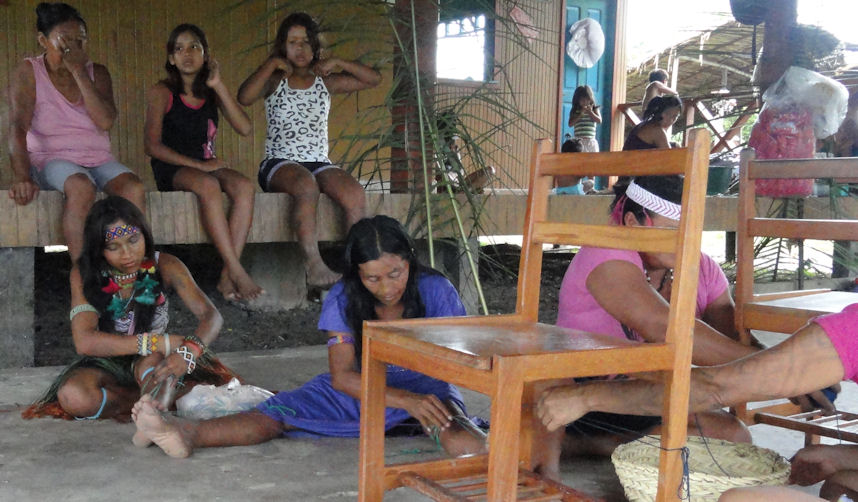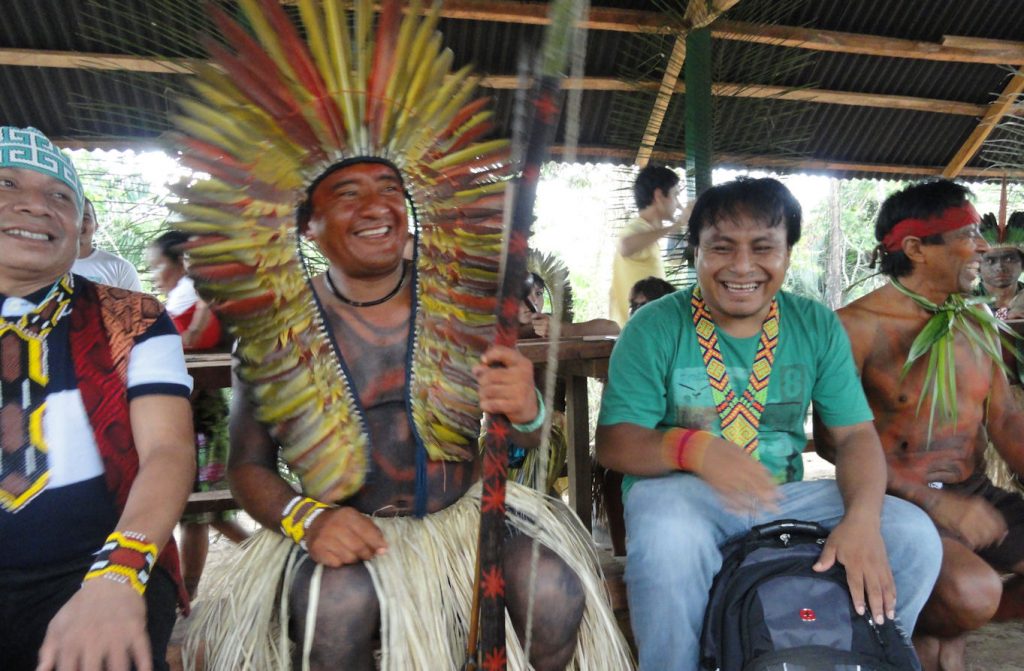
The indigenous people Huni Kui live in Peru and the Brazilian state of Acre. About ten thousand of them are today spread over twelve indigenous lands in Acre. They are the largest indigenous group in Acre.
Pinuyá was founded in 1972 when three families arrived from other parts of the state. They were not recognized until 1991 when they were granted 105 contiguous hectares (about 260 acres). The governor of Acre gave them another 200 hectares. With only 305 hectares, this is the smallest reserved area in the state. Today there are forty-three households and 162 people living on the reserve, which is 1.8 inhabitants per hectare. This is not enough for a hunting-gathering society. The economy of the area is based on family agriculture, fish farming and crafts.

The reserve is surrounded by cattle operations and 70% of the reserved land is still covered in cow pasture.The forest was mostly removed in the 1970s when the government made a concerted push into the “empty” lands of the west.The band is trying to reforest the land with native species.Mariza and I planted one tree, as I discussed in a previous post.
Band leaders told me that they need more land. It is true that 305 hectares are not much to support 162 people. It is impossible with hunting and extensive agriculture. They told us about some intensive agriculture. They do fish farming and raise pigs, ducks & chickens, all of which produce significant amounts of protein with relatively small inputs.

When I was in college, living an organic self-sufficient life appealed to me. I never did it, but my research indicated that you needed at least five acres (a little more than two hectares) of fertile farmland to support yourself. This was a minimum using intensive methods and it still required part-time work off the land. If you have 305 hectares, it is likely that much or most of it is not fertile farmland. Beyond that, the Huni Kui want to reestablish native forests. This is something close to my heart, but it implies hunting & gathering. You need a lot more acreage for this kind of lifestyle.

The rain forest ecosystem is not as rich as we might think if you look at the luxuriant growth, at least not for hunting and gathering. Its organisms have evolved over millennia to deny their energy to others. Lots of the activity takes place high in the trees where it is difficult for humans to access. That is why populations of rain forest hunter-gatherers remained so small for all those millennia. The land simply does not support large human populations. Densities can be only around two or three people per square kilometer (although they are obviously not spread evenly over this land). There are 100 hectares in a square kilometer (metric is easy) so a band like the one we visited would need about 8000 hectares instead of the 305 they have.

The forest here is a tough environment and we should not idealize the life of the past in a paradise full of serpents and dangers. There is no going back to the old lifestyle and the people clearly do not want to go back. The band’s leader wants preserve the best of his traditions and combine them with good things from the wider world. (We noticed the popularity of mobile phones and this implies mobile phone towers close by.) This is a balance very difficult to manage or even envision how it could work.

I sure don’t know what to do. It occurs to me that the problem of combining the old with the new is not a problem only for people like the Huni Kui. Although it seems much more urgent among them, creating sustainable futures for ourselves and our children is what all we face every day, a condition of being human. In their language, Huni Kui means “true people”. Their challenges are the challenges of true people everywhere.

